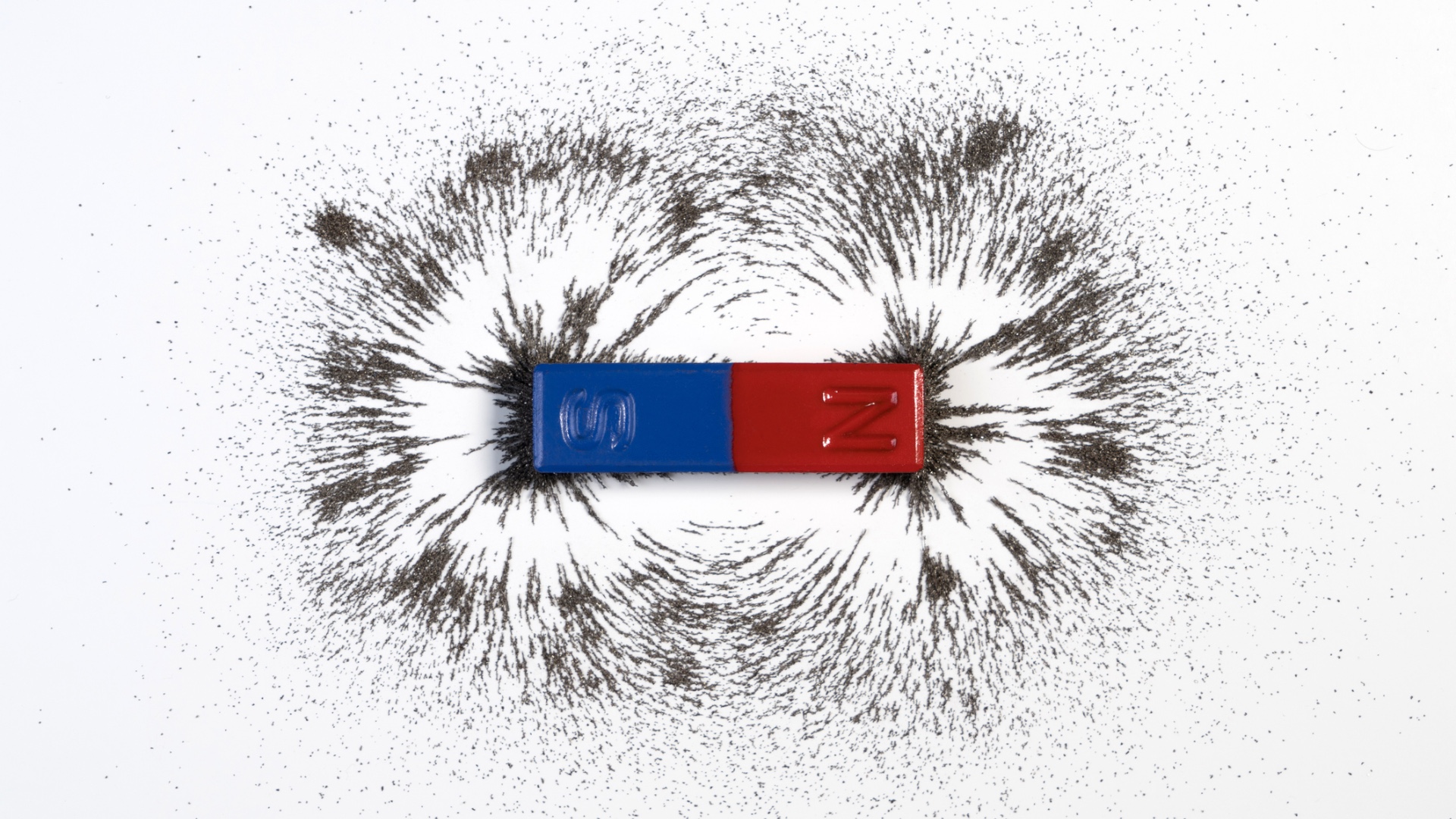
(Image credit: Wittayayut via Getty Images)
Cutting a bar magnet in half won’t get rid of its poles. It’ll just produce two magnets, each with a north pole that will be attracted to the other magnet’s south pole, and vice versa.
It’s this fundamental property of attraction that makes magnets useful for so many purposes, from holding a party invitation to a refrigerator to performing medical imaging.
But how do these poles arise? Why do magnets have north and south poles?
Magnets are “one of the deepest mysteries in physics,” said Greg Boebinger (opens in new tab), director of the National High Magnetic Field Laboratory in Tallahassee, Florida. While people have been using magnets for thousands of years (opens in new tab), scientists are still learning new things about how they work.
The most basic answer as to why magnets have poles lies in the behavior of electrons. All matter, including magnets, is made of atoms. In every atom, the nucleus is surrounded by one or more negatively charged electrons. Each of those electrons generates its own tiny magnetic field, which scientists refer to as a “spin.” If enough of those small magnetic fields are pointing in the same direction, the material itself becomes magnetic.
Related: Why does metal spark in the microwave?
An electron’s “spin” is something of an abstract concept, Boebinger told Live Science. Technically, nobody has seen an electron spinning — it’s far too tiny to be seen under a microscope. But physicists know electrons have a magnetic field because they’ve measured it. And one way that field could be generated is if the electron was spinning. Reverse the direction of the spin, and the magnetic field would flip.
When possible, electrons will pair up so that their spins cancel out (opens in new tab), making the net magnetism of an atom zero. But in some elements, such as iron, that can’t happen. The number of electrons and the way they’re positioned around the nucleus means that each iron atom will have an unpaired electron generating a small magnetic field.
In an unmagnetized material, these individual magnetic fields are pointing in different random directions. In that state, they mostly cancel each other out, so the material isn’t magnetic overall. But under the right conditions, the tiny subatomic magnetic fields can align to point in the same direction. One might think of this as the difference between a crowd of people milling about, versus all organizing and facing in the same direction. The combination of those very small magnetic fields makes a bigger magnetic field — so the material becomes a magnet.
Many of the magnets used in everyday life, like refrigerator magnets, are known as permanent magnets. In these materials, the magnetic fields of many atoms in the material have become permanently aligned by some outside force — like by being put inside a more powerful magnetic field.

Often, that more powerful magnetic field is created by electricity. Electricity and magnetism are fundamentally linked, because magnetic fields are generated by the movement of electrical charges. That’s why a spinning electron has a magnetic field. But scientists can also harness electricity to create very powerful magnets, said Paolo Ferracin (opens in new tab), a senior scientist at Lawrence Berkeley National Laboratory in California. Running enough current through a coil of wire generates a very strong magnetic field that lasts as long as the current is flowing. These electromagnets are often used in physics research, Ferracin told Live Science. They’re also used in medical tools such as magnetic resonance imaging (MRI) machines.
Earth has its own magnetic field, too — it’s what makes a compass needle work. Scientists have defined a magnet’s north pole as the end that would point toward Earth’s north pole if the magnet could spin freely. But technically, Boebinger explained, this means that the northern magnetic pole on Earth is actually a magnetic south pole, as opposite poles attract.
In physics convention, the lines of the magnetic field flow outward from the magnet’s north pole and into its south pole, forming a closed loop.
Physicists have also found other arrangements of magnetic poles, including quadrupoles (opens in new tab), in which a combination of north and south magnetic poles are arranged in a square. But one goal remains elusive, Ferracin said: Nobody’s yet found a magnetic monopole.
Electrons and protons are electric monopoles: they each have a single electric charge, either positive or negative. But electrons (and other particles, too) have two magnetic poles. And because they’re fundamental particles, they can’t be broken down further. This difference between the way particles behave electrically and magnetically has intrigued many physicists, and for some, finding a particle with a single magnetic pole is the holy grail. Its discovery would challenge the laws of physics as we currently understand them.










